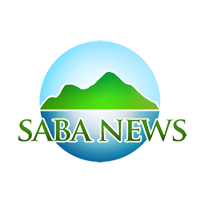Personnel of drinking water bottling plant Saba Splash last week completed a three-day training on important aspects in the production, bottling and distribution of drinking water. The training was done by Water Opleidingen from the Netherlands and Vitens Evides International (VEI) assisted with the coordination of the training.

Plant manager Oscar L. van der Kaap and Saba Splash employees Justin W. P. Linzey and Shannon Levenston participated in the training. This was training to refresh their knowledge, but also to learn new techniques which ensure the quality of the water during the sampling process and the bottling process. Other aspects were also part of the training, such as employee safety and hygienic working.
Overall the trainers Fred Rihkers and David Den Dulk were very pleased with the Saba Splash employees and the facility, which was constructed with funding of the Ministry of Infrastructure and Water Management (IeW) in the Netherlands. The facility opened in early November last year. At the new plant, 3-gallon and 5-gallon water bottles are filled, using a state-of-the-art system that produces healthy, safe and affordable drinking water, providing a basic need for the Saba people.
“We are fortunate to have such a professional bottling plant here on Saba. Now we have a properly trained and dynamic team that will ensure that the quality of Saba Splash is well maintained,” said Commissioner Bruce Zagers. The Commissioner congratulated the team upon the completion of the training and thanked them for their efforts in building the Saba Splash brand.

Day 1 of the training consisted of, among other things, training on the job that focused on how the treatment of drinking water is structured, how the process line works within the bottling plant for making and supplying drinking water, how to maintain a safe and hygienic process, how to ensure that the drinking water from the bottling plant meets the requirements of the drinking water law BES, how to ensure business continuity, and how the quality control system is set up and used in practice to meet the legal quality standards.
Day 2 of the training focused on how to make drinking water, the extraction, seawater and spring
purification, Reversed Osmosis (RO) installation, the basic distribution overview that included the
construction and design, pipes and materials, and the water quality in the grid. Day 2 also included a session on working safely and an on-the-job training that focused on the storage of materials and the logistics of the process of water supply to customers.
Working safely, the chemical and microbiological aspects of the drinking water process were the focal points of the third and last day of this successful training. At the end of the training, the participants received a certificate.
GIS Saba

 Saba News News and Information from Saba Island, Dutch Caribbean
Saba News News and Information from Saba Island, Dutch Caribbean
